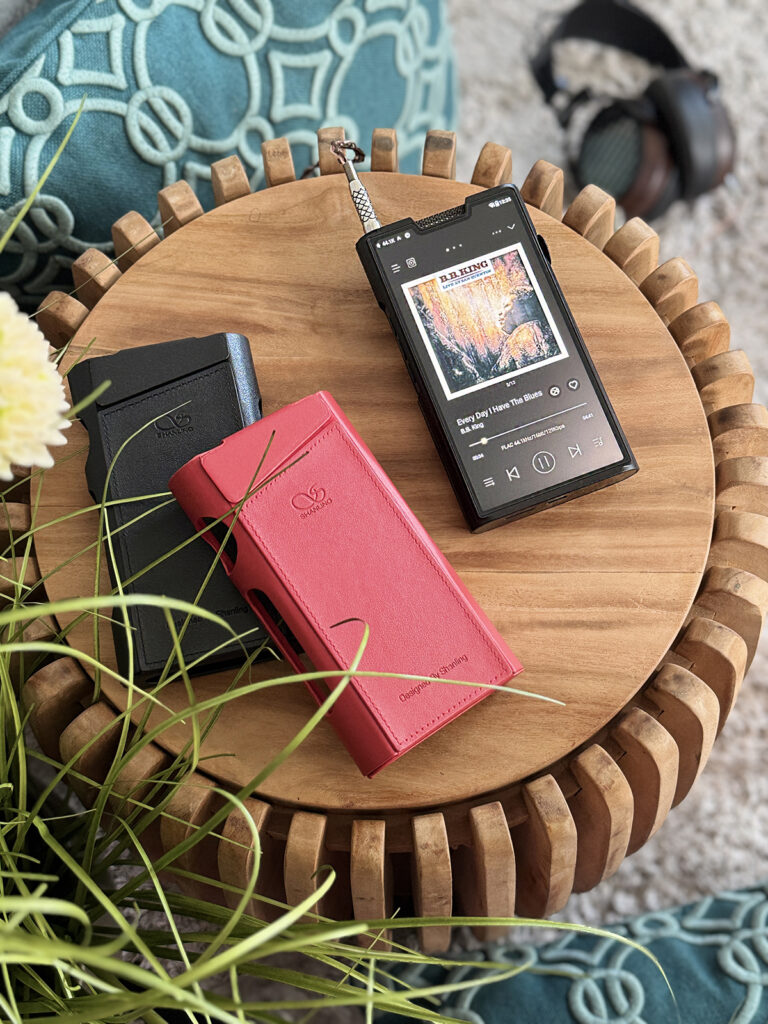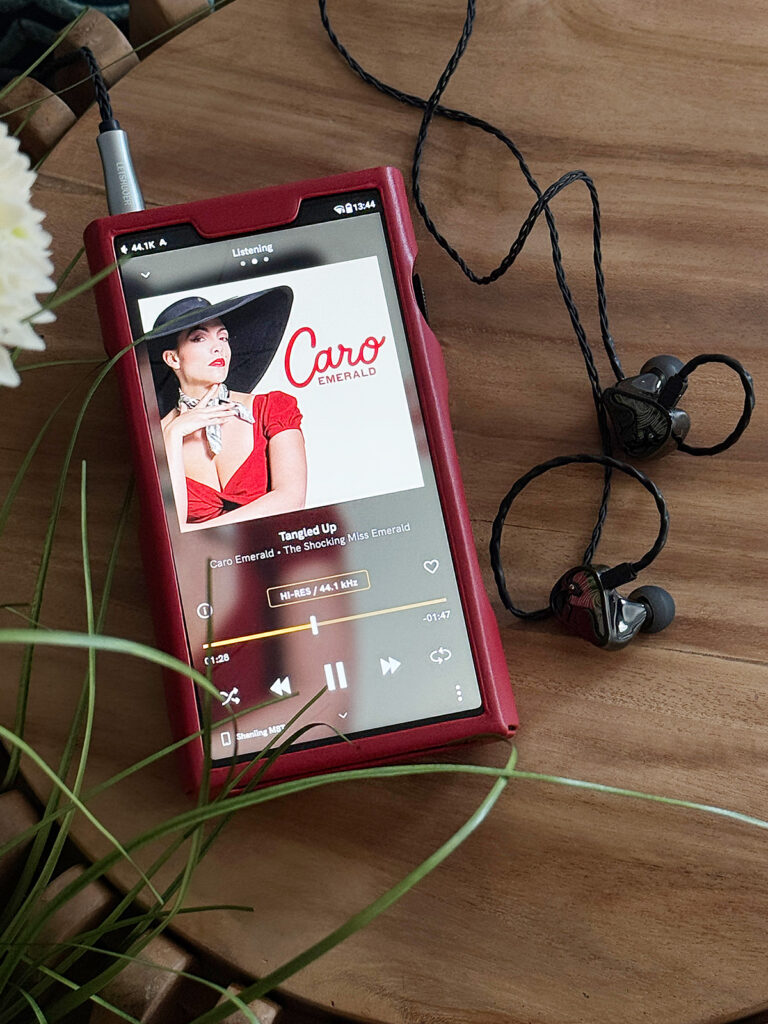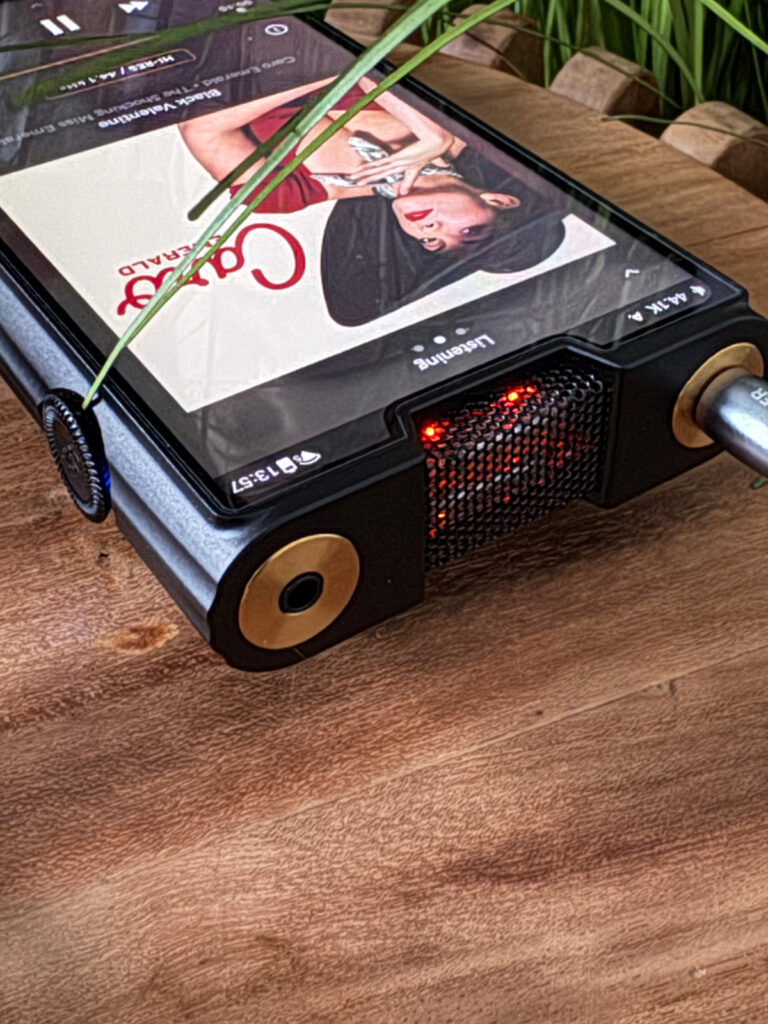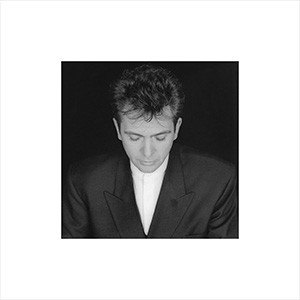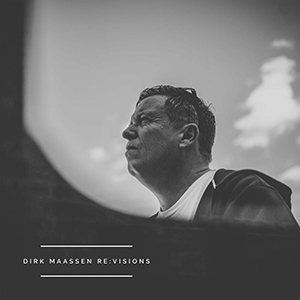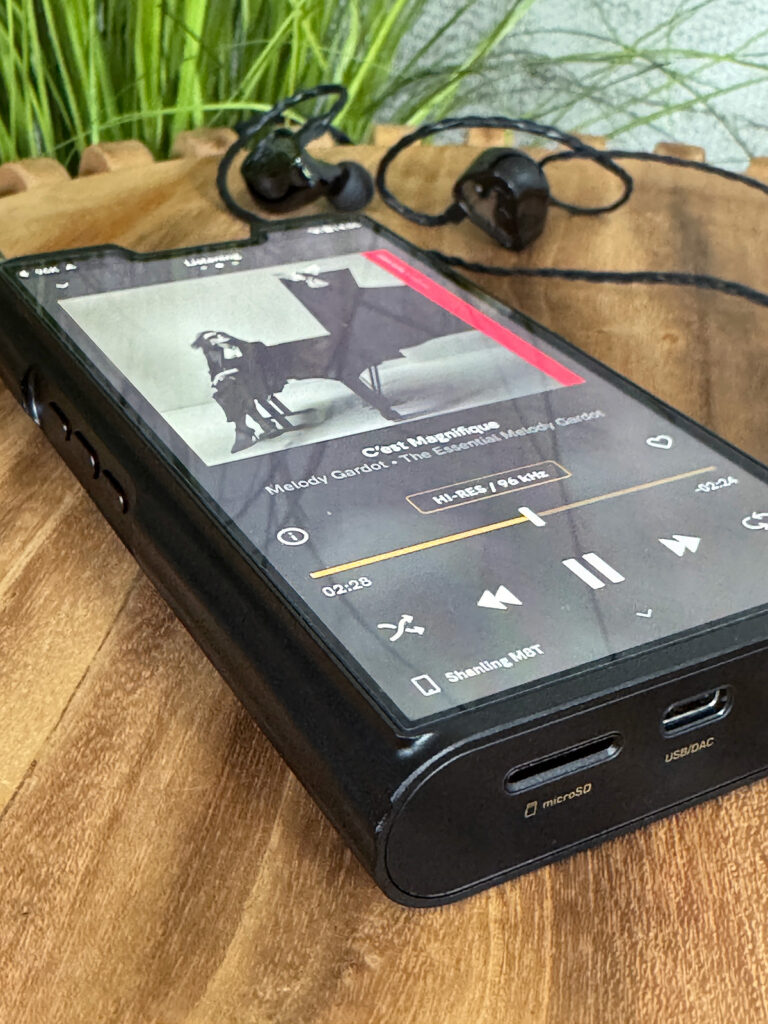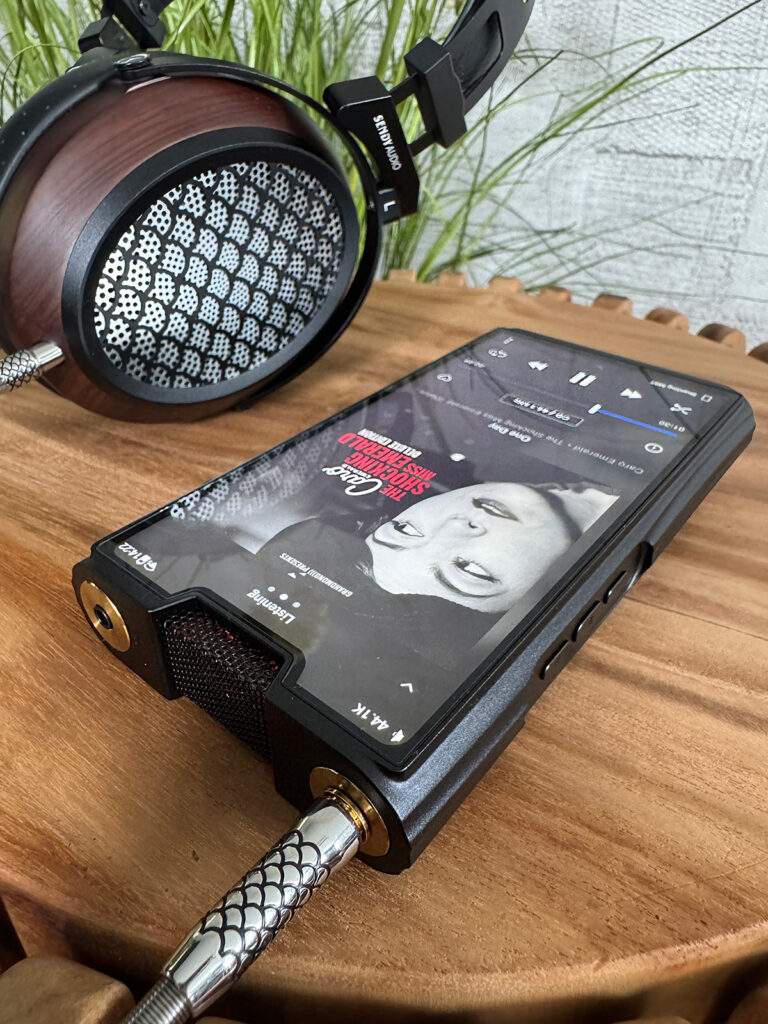Shanling began developing audio products in 1988, launching their first amplifier in the same year. What followed was decades of significant progress which evolved into a diverse portfolio that includes high-resolution portable music players, headphone amplifiers and refined DAC’s.
The company is headquartered in Shenzhen and equipped with its own manufacturing facilities. It gained much recognition for its expertise in both solid-state and tube-based designs. Always aiming to deliver an authentic ‘Shanling sound’ and a seamless user experience. Through continuous research and close technical collaborations, Shanling has a reputation as a trusted brand among audiophiles worldwide.
In this review, we will be testing Shanling’s latest flagship DAP the M8T, which features genuine military grade dual JAN6418 vacuum tubes.
Design & Specs
Compared to the original Shanling M8, the M8T has a more refined design while keeping the same premium character. Both models share the solid aluminum body and excellent build quality, but the M8T feels more streamlined. The edges are smoother, the overall profile is slimmer and the device sits more comfortably in your hand.
The M8T has a clean look with decent button placement and feels balanced in the hand. Its matte finish makes it easier to grip while also doing a decent job of keeping fingerprints away. The Shanling M8T truly stands out with its design, featuring a recessed window that reveals a pair of Raytheon JAN6418 tubes. They glow beautifully when listening to music.
You can easily switch to the transistor stage, built around the ADA45253 I/V, OPA1612 LPF and AD8397 for high current drive.
The M8T features a dual-DAC architecture with two flagship AKM AK4499EX chipsets, each supported by a dedicated AK4191EQ modulator. This discrete configuration enhances jitter control compared to designs that share a single modulator. Two high-precision KDS crystal oscillators (90.3168 MHz and 98.304 MHz) and a custom FPGA controller further strengthen timing accuracy.
Its 6-inch Sharp full-HD touchscreen is vibrant and easily viewable outdoors. Controls are tactile and the M8T has the following port selection: USB-C, microSD, both balanced and single-ended headphone outputs.
With a Snapdragon 665, 6GB DDR4 RAM and 128GB ROM powering the open Android 13 OS, gives certainly a more refreshing and flagship-like experience then many competitors. The M8T boots fast. This is easily one of the fastest DAPs in the market.
The M8T is also pre-installed with Google Play Store and APKPure so you can download various apps right away and without region-locked restrictions.
Specs
-
Dual AKM AK4499EX DACs paired with AK4191EQ modulators for top-tier 32bit/768kHz PCM and native DSD1024 playback
-
Swap instantly between three amplification modes: Transistor (solid-state), Tube Triode and Tube Super-Linear
-
Output power: up to 1125mW @ 32Ω balanced, with low output impedance to suit sensitive IEMs to power-hungry headphones
-
Snapdragon 665 CPU, 6GB RAM, 128GB storage (expandable via microSD) and optimized Android 13
-
Bluetooth 5.0 (LDAC, AAC), WiFi connectivity and Google Play access for streaming apps
- 3 Gain modes
- Tactile buttons for play, next and back
- Weigth: 383gr / 13.5 oz
- Battery life, support for QC3.0 and PD2.0 for 18W charging and with its 8350 mAh battery it can play up to 15.5 hours on an SE connection and 13 hours on balanced. If you use it as a Bluetooth receiver it can even work for up to 96 hours
In the Box:
- The Shanling M8T
- USB cable
- Extra screen protectors (one factory installed)
- Included quality leather case in a separate box (Black or Red)
Controls
The volume control doubles as an on/off button on the right, navigation buttons are on the left.
From the drop-down menu, you will find a work mode quick access button, allowing users to switch between Android mode and Prime mode. Prime mode force closes other apps and services and runs only the Shanling music app. The bluetooth amplifier (receiver) mode, USB decoding mode and airplay receiver mode.
Shanling music app
Using the in-built Shanling music app offers a smooth experience with some nice visual effects. Features include the cover art view, VU-meter visualizations during playback, Synclink mobile remote control and wireless music transfer from PC.
You can also connect to your NAS server under the same network. DLNA streaming is also supported.
Bluetooth & Wifi
The M8T Bluetooth connection is bi-directional. When acting as a transmitter it can beam using LDAC, SBC and AAC codecs. As a receiver, it can also receive the same codecs which allow users to switch between higher output quality or better range/lengthened playback time.
For wifi the connection remains stable when moving around and behind doors and walls and when using the Airplay receiving function there are no delays heard.
USB-DAC / OTG
When using the M8T as a USB DAC you can choose not to charge the unit while listening, which is great for the battery’s health.
The output quality on USB decoding mode is consistent with local playback.
You can also access the audio settings and change the filters, but there is no way to switch between the tube and transistor amping modes after entering the DAC mode.
You can also hook up USB drives or card readers to manage photos and music files.
Test equipment
– Letshuoer Mystic 8
– Sendy Audio Aiva 2
– Hifiman Arya Unveiled
– Fir Audio M5
– Campfire Audio Alien Brain
Sound quality
The Shanling M8T sounds natural and engaging. Its presentation is balanced, with a smooth treble and refined tonality, while maintaining excellent detail retrieval. It leans towards a neutral sound signature, with triode mode adding a touch of warmth without overdoing it.
What truly sets the M8T apart is its presentation, a wide and open soundstage with a highly accurate imaging. The result is a holographic sense of depth and separation. And then there are the three selectable modes, which make this DAP highly versatile, as each offers its own ‘very’ distinct sound signature.
Whether you’re a fan of the original M8 or simply in search of a more organic, tube-driven sound that solid-state can’t replicate, the M8T offers a listening experience that should be on your list.
Treble
The treble performance of the Shanling M8T is smooth and highly controlled. High frequencies extend with a natural sense and clarity, never crossing into sharpness. Micro-details such as the decay of a note or the light touch of a hi-hat are revealed without harshness.
This balance makes it suitable for long listening, while still offering that sparkle and openness you want.
Midrange
Vocals are presented with body and detail, never sounding thin or recessed. Male voices have a solid weight while female vocals sound natural. Recordings sound faithful and engaging. Whether listening to intimate jazz vocals or layered rock productions, the midrange remains consistent and controlled, never recessed in any way.
Bass
The bass on the M8T shows both authority and discipline. Sub-bass reaches low, providing a physical sense of rumble that underpins electronic, orchestral or cinematic tracks with weight. At the same time, the mid-bass is tight and punchy, giving drums and bass guitars a strong presence without muddying the midrange.
The speed of the bass response ensures that even complex passages remain clearly defined.
3 distinctive modes
Transistor mode
Pure transistor mode allows the M8T to completely bypass the tube amping circuitry, sounding cleaner in the background, enhancing dynamics. The bass impacts are firm with a clean decay and treble transients are also presented clearer, resulting in a better sense of openness and precision. Vocals are less colored and more separated from the backing as the harmonics aren’t as emphasized.
Triode mode
Triode mode introduces a touch of warmth and smoothness to the sound, somewhat M shaped. Treble feels more poslished. The mids gain a bit more body, vocals feel fuller and instruments carry a slightly richer tone. The mid-bass decays have air and attack. The vocals are empowered with richer harmonics without overly boosting the body, so it still sounds balanced.
The rich texture together in the upper mids sounds uplifting, rendering elements across the mids livelier. This mode works equally well for both male and female vocals, as well as instrumentals. The bass remains well-defined but with a softer edge, making the presentation more relaxed and musical.
Super linear mode
Ultra Linear mode focuses on maximum precision and technical performance. It produces a darker sound and a thicker bass response. By thickening up the fundamental frequencies and taking away some of the treble’s brilliance, it provides a darker, less intrusive overall tonality.
The added weight in the lows allow bass instruments to stand out, coming closer to the front stage and helping vocals to sound meatier with more body.
This mode is more relaxing and polished in the treble than the other two modes. The bass gets more attention than the mids, which is less elaborated as in triode mode.
Sub-bass rumble is highlighted, sounding more layered and pronounced. This mode is very enjoyable with jazz recordings, quartets and acoustic instruments that sound powerful, full-bodied and organic.
Soundstage
The soundstage created by the M8T has a convincing sense of both width and depth. Instruments are positioned with accuracy, giving each element its own space in the mix. Imaging is precise, allowing you to follow the placement of individual performers in a live recording with ease. Depth layering adds to the realism, preventing busy tracks from collapsing into a flat wall of sound.
The transistor mode has a more V-shaped signature, sounding more expanded in staging. It is also the strongest in dynamics with a faster, more precise transient response and a darker background.
Tube modes are as resolving in the mids and lows but sound more rounded in the upper registers. The staging is more confined with the mids being more favored. In both Tube modes, the upper vocal frequencies are smoothly blended with the backing, although it doesn’t sound as clearly outlined, it feels much lusher and mellow.
The vocal image is more distinctly outlined in the Triode mode with the perceived depth strengthened by the elaborated decays. With the Super-Linear mode the stage gets deeper, despite some air in the treble sounding diminished. This gives bass instruments as well as dark voices stronger focus and texture and is very different from the Transistor mode’s tonality.
Peter Gabriel – ‘Shaking the Tree’ (Shaking the Tree)
On ‘Shaking the Tree’ Peter Gabriel’s distinctive vocal delivery and rhythmic complexities came vividly alive. The track’s intricate percussion and layered vocals were clearly separated, each element distinctly articulated without sacrificing cohesion. The player’s made this vibrant, groove-driven track engaging, highlighting Gabriel’s creativity and the song’s infectious energy.
Melody Gardot – ‘So Long’ (The Absence)
The Shanling M8T effortlessly captured Melody Gardot’s velvety vocals, presenting them with a rich intimacy. The subtle textures of acoustic instruments were articulated clearly, with the M8T highlighting the delicate interplay between guitar and percussion. The warmth and emotional depth in Gardot’s voice resonate with clarity and lushness, making every breath and nuance tangible.
Ibrahim Ferrer – ‘La Musica Cubana’ (Buenos Hermanos)
This lively Cuban track benefits immensely from the M8T’s dynamic range and separation. The rhythm section, marked by vibrant percussion and punchy brass, emerged vividly. Ferrer’s voice is rendered with precision, the natural timbre and energy shining through clearly without overshadowing the intricate instrumentation.
Dirk Maassen – ‘The Unforgettable’ (Re-Visions)
The piano notes shined through the Shanling M8T with crystalline clarity and refined dynamics. Each keystroke was captured with pristine detail, showcasing both the gentle nuances and dramatic crescendos with emotional precision. The M8T demonstrated exceptional spatial imaging, placing the listener directly in front of Maassen’s piano, creating a compelling sense of intimacy and presence.

